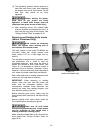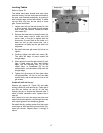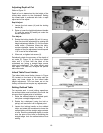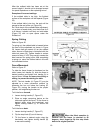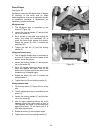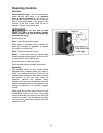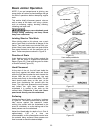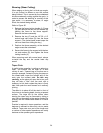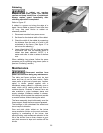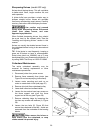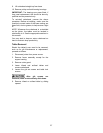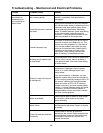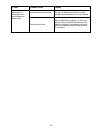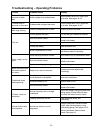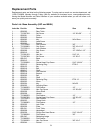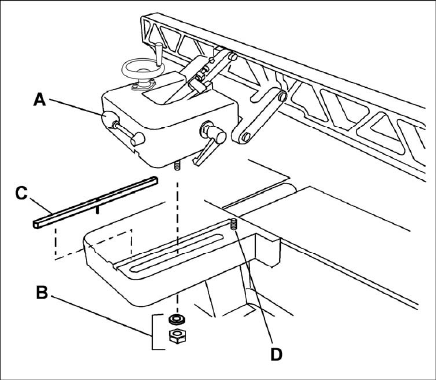
24
Skewing (Shear Cutting)
When edging or facing burl or birds-eye maple,
it is not unusual to deface or mar the surface
being finished. This is caused by the cutterhead
knives occasionally cutting against the grain. In
order to prevent the defacing or marring of this
type wood, it is necessary to skew, or angle
finish, the material being worked.
Refer to Figure 36.
1. Release the fence locking handle (A, Figure
36) and remove the hex nut and washer (B)
holding the fence to the fence support.
Remove the fence assembly.
2. Remove the key (C) and the 1/4”-20 x 1/4”
socket head cap screw (D) from the fence
support. (The socket head screw keeps the
non-mar insert from hitting the key.)
3. Position the fence assembly at the desired
angle across the cutterhead.
4. Secure the fence to the support with the hex
nut and washer (B), then tighten the fence
locking handle (A).
When resuming work with normal stock, always
re-install the key and the socket head cap
screw!
Taper Cuts
A useful jointer operation is cutting an edge to a
taper. The method can be used on a wide
variety of work. Tapered legs of furniture are a
common example. Instead of laying the piece on
the infeed table, lower the forward end of the
work onto the outfeed table. Do this very
carefully, as the piece will span the knives, and
they will take a "bite" from the work with a
tendency to kick back unless the piece is firmly
held. Now push the work forward as in ordinary
jointing.
The effect is to plane off all the stock in front of
the knives to increasing depth, leaving a tapered
surface. The ridge left by the knives when
starting the taper may be removed by taking a
very light cut according to the regular method for
jointing, with the infeed table raised to its usual
position.
Practice is required in taper operations, and the
beginner is advised to make trial cuts on waste
material. Taper cuts over part of the length and
a number of other special operations can easily
be done as the operator gains experience.
Figure 36



